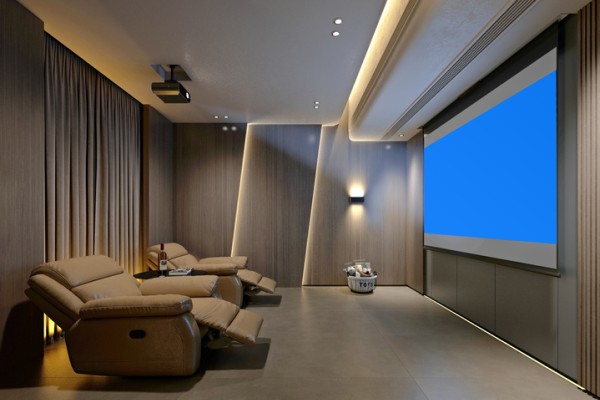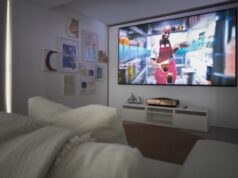
Home video used to mean bulky VHS tapes and DVD players. But today, it’s a whole different ball game. Modern home video systems combine ultra-high-definition displays, streaming services, advanced projectors and smart integration to bring cinema-quality experiences into your living room or dedicated home theatre.
If you’re building or renovating, understanding what “home video” means today can help you choose the right gear and design a space that works perfectly.
What makes up a modern home video system?
At its core, home video is about delivering great picture quality and smooth playback on your chosen screen. This usually involves:
- Display devices: TVs or projectors that support 4K or even 8K resolution with HDR
- Source devices: Media players, streaming devices, Blu-ray players or a home theatre PC (HTPC)
- Audio equipment: Soundbars, AV receivers and speakers for immersive sound
- Content sources: Streaming apps, physical discs, downloaded files or live TV
Display technologies today
LED/LCD TVs remain the most common, offering bright, sharp images and sizes from compact to cinema-scale. Look for models with:
- 4K resolution as standard (3840×2160 pixels)
- High Dynamic Range (HDR) support for richer colours and contrast
- HDMI 2.1 ports for future-proof connectivity
OLED TVs offer deeper blacks and more vibrant colours but are generally pricier. Great for dedicated media rooms.
Projectors have come a long way, with affordable 4K laser and LED models that rival TVs in picture quality. Projectors require proper room setup, including lighting control and screen placement, so check out our guide to home theatre lighting and seating for tips.
Source devices and content delivery
Today, most home video content streams over the internet through services like Netflix, Disney+, Amazon Prime and Stan. Streaming devices such as Apple TV 4K, Google Chromecast with Google TV or Amazon Fire Stick handle this easily.
For physical media fans, 4K Ultra HD Blu-ray players still deliver the best picture and sound quality without compression artifacts. You can also build a custom home theatre PC to manage and stream your entire media library.
Connectivity matters
Modern home video systems require high-speed connections to handle large 4K or 8K files smoothly:
- Use HDMI 2.1 cables to connect your devices for full bandwidth
- Prefer wired Ethernet for streaming devices or HTPCs to avoid buffering
- Set up a reliable home network with strong WiFi or mesh systems
Setting up your home video space
The best picture can be ruined by glare or poor viewing angles. Design your room to optimise:
- Screen placement and size for your seating distance
- Ambient lighting control using blackout curtains or smart lighting
- Acoustic treatments to complement your sound system and reduce echo
Our guides on soundproofing home theatres and window treatments can help you get these details right.
Future trends in home video
Look out for:
- 8K displays: Still emerging but growing fast, 8K offers incredible detail for very large screens
- HDR10+ and Dolby Vision IQ: Advanced HDR formats that adjust to room lighting conditions
- AI upscaling: Many modern TVs use AI to improve lower-resolution content in real time
- Streaming 4K gaming: Platforms like NVIDIA GeForce Now and Xbox Cloud Gaming bring high-res gaming to your big screen
Home video today is about combining the right tech with smart design to get cinema-quality entertainment at home. Whether you’re building a dedicated theatre or upgrading your lounge room, planning your system with current technology will ensure years of enjoyment.
For more on building your dream media room, explore our guides to home theatre seating, lighting and soundproofing.




